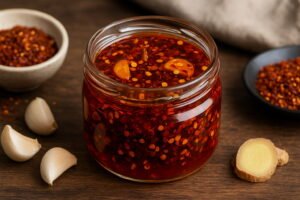The Paleo diet, often referred to as the “caveman diet,” has been a cornerstone of clean and natural eating for years. By focusing on consuming whole foods, lean meats, fruits, vegetables, nuts, and seeds, the diet seeks to mimic the eating habits of our Paleolithic ancestors. In 2025, the Paleo diet continues to be popular, but as the landscape of health and nutrition evolves, so too has the need to supplement this ancient way of eating with modern solutions.
While the core of the Paleo philosophy remains unchanged, many followers are discovering that certain supplements can help fill nutritional gaps, enhance overall health, and optimize performance, especially for those with demanding lifestyles. For those adhering to the Paleo guidelines, choosing supplements that align with the principles of this diet is crucial—products that are free from artificial ingredients, grains, dairy, or anything processed.
In this post, we’ll dive into the most essential Paleo diet supplements for 2025, looking closely at why they’re needed, what they offer, and how to incorporate them into your Paleo lifestyle. Let’s start by exploring the best Paleo supplements for gut health.
Best Paleo Supplements for Gut Health
One of the cornerstones of good health is a well-functioning gut. The Paleo diet already emphasizes foods that are naturally good for the digestive system—fermented vegetables, bone broth, and leafy greens are all beneficial to gut health. However, modern life, environmental factors, and even certain Paleo-approved foods can occasionally lead to digestive issues. That’s where supplements come in.
In 2025, the importance of gut health has reached new levels of awareness. With emerging research linking the gut to nearly every aspect of health—from immunity to mental well-being—many Paleo dieters are turning to gut-specific supplements to keep their digestive systems in peak condition.
Probiotics for Balanced Gut Flora
Probiotics have become a household name in the realm of gut health. These “good bacteria” help maintain a balanced gut microbiome, which is essential for digestion, nutrient absorption, and overall immunity. While fermented foods like sauerkraut and kimchi are excellent sources of probiotics, many find that a high-quality probiotic supplement provides the consistency and potency needed to support their gut health on a daily basis.
In 2025, look for Paleo-friendly probiotics that contain multiple strains of beneficial bacteria and are free from additives, dairy, and other non-Paleo ingredients. These can help reduce bloating, improve digestion, and enhance nutrient absorption—key benefits for anyone following the Paleo lifestyle.
Digestive Enzymes for Better Breakdown of Food
Even on a clean diet like Paleo, some people experience difficulty digesting certain foods, especially when transitioning from a conventional diet. This is where digestive enzymes come into play. These supplements contain enzymes like protease, lipase, and amylase, which help break down proteins, fats, and carbohydrates, ensuring that food is fully digested and nutrients are properly absorbed.
For Paleo followers in 2025, digestive enzymes can make a noticeable difference, particularly when consuming meals rich in meat and vegetables. They help reduce digestive discomfort, support metabolism, and prevent nutrient deficiencies that may arise from incomplete digestion.
Bone Broth Powder for Healing and Nourishing the Gut
Bone broth has long been a Paleo staple, celebrated for its rich content of collagen, gelatin, and amino acids that promote gut lining health. In 2025, bone broth supplements, particularly in powder form, have become popular due to their convenience. Sipping bone broth may not always be practical, but adding a scoop of bone broth powder to smoothies or soups is an easy way to reap the gut-healing benefits.
Bone broth supplements not only support digestion but also contribute to joint health and skin elasticity, making them a multifaceted addition to any Paleo dieter’s regimen.
Incorporating these gut health supplements into your Paleo routine in 2025 can help ensure your digestive system stays strong, resilient, and capable of supporting your overall health goals.
Paleo-Friendly Protein Supplements
Protein is a fundamental component of the Paleo diet. It helps build muscle, repair tissues, and keep you feeling full and energized throughout the day. While many Paleo followers prioritize whole food sources of protein—such as grass-fed beef, free-range poultry, wild-caught fish, and eggs—protein supplements have become an increasingly popular option in 2025.
In a fast-paced world where convenience is key, protein supplements offer a simple and effective way to meet your daily protein needs without compromising your commitment to Paleo principles. However, not all protein supplements are Paleo-friendly. It’s essential to choose ones that align with the diet’s core values: no grains, dairy, or artificial additives.
Collagen: The Multi-Benefit Paleo Protein
Collagen protein has seen a surge in popularity among Paleo dieters, and for good reason. Collagen is the most abundant protein in the human body, making it essential for maintaining healthy skin, joints, and connective tissues. Unlike traditional protein powders, collagen is virtually tasteless, easy to mix into smoothies or coffee, and free from dairy, grains, and legumes, making it a perfect Paleo-friendly option.
By 2025, collagen supplements have become a staple for many people, particularly those looking to support joint health, improve skin elasticity, and promote gut health—all critical areas of focus for the Paleo community. Whether you’re an athlete or someone just trying to maintain a healthy body, adding a collagen supplement to your routine can help keep you feeling strong and looking youthful.
Bone Broth Protein: Rich in Nutrients and Flavor
Bone broth has long been celebrated in the Paleo community, but in recent years, bone broth protein powder has emerged as a convenient alternative. Rich in amino acids like glycine and proline, bone broth protein supports muscle recovery, joint health, and digestive wellness. Unlike many other protein supplements, bone broth protein also contains collagen, making it a two-in-one powerhouse for Paleo dieters.
In 2025, bone broth protein supplements are more readily available than ever, and their versatility makes them a go-to option for those seeking a nutrient-dense protein source that aligns with Paleo principles. Whether added to soups, smoothies, or even baked goods, this supplement packs a punch of flavor and nutrition.
Essential Vitamins and Minerals for Paleo Dieters
While the Paleo diet emphasizes nutrient-dense whole foods, there are still certain vitamins and minerals that can be challenging to obtain in sufficient quantities. In 2025, more Paleo followers are turning to targeted supplementation to ensure they meet all of their micronutrient needs. Let’s take a look at the most important vitamins and minerals for Paleo dieters.
Magnesium: The Often Overlooked Mineral
Magnesium plays a vital role in over 300 biochemical processes in the body, including muscle function, energy production, and nervous system regulation. Unfortunately, many Paleo dieters don’t get enough magnesium from food sources alone, as modern farming practices have depleted magnesium levels in the soil.
In 2025, magnesium supplementation is becoming increasingly popular among Paleo adherents. The best Paleo-friendly magnesium supplements come in forms such as magnesium glycinate or magnesium citrate, which are easily absorbed by the body. Taking a magnesium supplement can help improve sleep quality, reduce muscle cramps, and boost overall energy levels.
Vitamin D: Sunshine in a Capsule
Vitamin D is critical for bone health, immune function, and mood regulation, but it’s one of the most common deficiencies worldwide. Even those following a Paleo diet rich in fatty fish and mushrooms may struggle to get enough vitamin D, especially if they live in areas with limited sun exposure.
In 2025, vitamin D supplements are an essential addition to many Paleo dieters’ routines, especially during the winter months or for those spending long hours indoors. It’s recommended to pair vitamin D with vitamin K2 to enhance calcium absorption and prevent calcification in the arteries.
Omega-3 Fatty Acids: Balancing the Omega Ratio
Omega-3 fatty acids are vital for reducing inflammation, supporting heart health, and promoting brain function. While the Paleo diet includes sources of omega-3s like wild-caught fish and grass-fed meats, many individuals may not consume enough to maintain an optimal balance between omega-3 and omega-6 fatty acids.
Omega-3 supplements, particularly those sourced from fish oil or algae oil, are popular among Paleo followers in 2025. These supplements help ensure that the body receives enough EPA and DHA, the two most important forms of omega-3s for reducing inflammation and supporting overall health.
Paleo Supplements for Weight Loss
For many people, one of the key motivations behind adopting a Paleo lifestyle is weight management. The focus on whole, unprocessed foods naturally lends itself to better portion control and more stable energy levels, but some individuals still find themselves seeking extra support to shed unwanted pounds. In 2025, several Paleo-friendly supplements have gained attention for their ability to aid in weight loss without compromising the diet’s core values.
MCT Oil: A Fat-Burning Powerhouse
MCT (medium-chain triglycerides) oil has become a popular supplement for those following a Paleo diet, thanks to its ability to support weight loss by boosting fat metabolism. MCT oil is quickly absorbed by the body and used for energy, making it a great addition to coffee, smoothies, or even salads. Its unique composition allows the body to burn fat for fuel, rather than storing it.
In 2025, MCT oil continues to be a favorite among Paleo dieters looking to enhance fat burning while maintaining steady energy levels throughout the day.
Green Tea Extract: A Natural Metabolism Booster
Green tea extract is known for its high antioxidant content and its ability to boost metabolism. In particular, the catechins found in green tea are believed to increase fat oxidation, making it an ideal supplement for those looking to lose weight while staying Paleo-compliant.
By incorporating green tea extract into a well-rounded Paleo diet, dieters in 2025 can benefit from enhanced fat loss, improved focus, and a boost in overall energy levels—all without the need for artificial stimulants.
Together, these Paleo-friendly supplements help ensure that individuals following the diet in 2025 can maintain optimal health, lose weight efficiently, and meet their nutritional needs in a modern world that often challenges our ancestral way of eating.
Immune-Boosting Paleo Supplements
As health consciousness continues to rise, boosting the immune system has become a priority for many Paleo followers, particularly in 2025. The Paleo diet already emphasizes nutrient-dense foods that naturally support immunity, such as leafy greens, nuts, and lean meats. However, certain supplements can provide an additional layer of defense, especially in today’s fast-paced and often stressful environment.
Elderberry: A Potent Immune Supporter
Elderberry has long been used in traditional medicine for its ability to fight off colds and flu. In recent years, elderberry supplements have gained widespread attention for their antiviral and anti-inflammatory properties. Rich in antioxidants, elderberries help strengthen the immune system by neutralizing harmful free radicals and supporting the body’s natural defenses.
In 2025, elderberry supplements are a popular choice for Paleo dieters looking to bolster their immune systems. Available in syrup, capsule, or gummy form, elderberry provides a natural, Paleo-compliant way to stay healthy, especially during cold and flu season.
Zinc: A Key Mineral for Immune Function
Zinc is an essential mineral that plays a crucial role in immune function. It helps the body produce white blood cells, which are vital for fighting off infections. While zinc can be found in certain Paleo foods like shellfish, red meat, and seeds, supplementation is often recommended to ensure adequate levels, particularly during times of stress or illness.
In 2025, Paleo-friendly zinc supplements are widely used to enhance immune response and reduce the duration of colds. Choosing a high-quality zinc supplement can help Paleo followers maintain a strong immune system and support overall health.
Medicinal Mushrooms: Ancient Remedies for Modern Health
Medicinal mushrooms, such as reishi, chaga, and cordyceps, have been used for centuries to promote longevity and immune strength. These mushrooms contain bioactive compounds that enhance the immune system, reduce inflammation, and support cellular health. For Paleo dieters in 2025, medicinal mushroom supplements offer a natural way to stay resilient in the face of modern stressors.
Available in powder or capsule form, medicinal mushroom supplements can be easily added to smoothies, teas, or even cooking. Their immune-boosting properties make them a valuable addition to a Paleo lifestyle that emphasizes natural, holistic health practices.
Supplements for Energy and Athletic Performance on Paleo
The Paleo diet naturally provides sustained energy through its focus on whole, nutrient-dense foods. However, for athletes and active individuals, additional support may be needed to optimize performance and recovery. In 2025, several Paleo-friendly supplements have gained popularity for their ability to enhance energy, improve endurance, and aid muscle recovery—all while staying true to the principles of the Paleo diet.
BCAAs: Supporting Muscle Recovery
Branched-chain amino acids (BCAAs) are essential nutrients that help prevent muscle breakdown during exercise and promote faster recovery afterward. While meat and eggs are excellent sources of BCAAs, many athletes find that supplementing with BCAAs provides a convenient way to support muscle recovery and enhance athletic performance.
In 2025, BCAA supplements are widely used by Paleo athletes looking to improve endurance and reduce muscle soreness. These supplements are especially beneficial for those engaging in high-intensity workouts, as they help preserve lean muscle mass while providing an energy boost.
Electrolytes: Replenishing Lost Minerals
Electrolytes, such as sodium, potassium, and magnesium, are essential for maintaining proper hydration and muscle function. While the Paleo diet includes plenty of foods that provide these minerals, athletes who engage in intense exercise often lose electrolytes through sweat and need to replenish them to avoid dehydration and muscle cramps.
Paleo-friendly electrolyte supplements, free from sugar and artificial additives, have become a popular choice in 2025 for keeping energy levels up and preventing fatigue. These supplements can be added to water for a quick and effective hydration boost, making them ideal for anyone leading an active Paleo lifestyle.
Adaptogens: Managing Stress and Boosting Energy
Adaptogens, such as ashwagandha and rhodiola, are herbs that help the body adapt to stress and maintain balanced energy levels. These powerful plants have been used for centuries in traditional medicine and are now gaining recognition in the Paleo community for their ability to enhance athletic performance and combat fatigue.
In 2025, adaptogen supplements are commonly used by Paleo followers who want to improve their endurance, reduce stress, and maintain steady energy throughout the day. These herbs help the body cope with physical and mental stress, making them an ideal supplement for those with demanding fitness regimens or high-stress lifestyles.
Paleo Supplements for Bone and Joint Health
Maintaining strong bones and healthy joints is critical for long-term health, especially for those following an active Paleo lifestyle. The Paleo diet naturally supports bone and joint health through nutrient-rich foods, but some individuals may need additional support to prevent issues like osteoporosis or joint pain. In 2025, several Paleo-friendly supplements have emerged as go-to options for promoting bone strength and joint mobility.
Calcium: Supporting Strong Bones
Calcium is a vital mineral for maintaining strong bones and teeth, and it plays a critical role in muscle function and nerve signaling. While many people associate calcium with dairy products, Paleo followers can obtain this mineral from foods like leafy greens, fish with bones, and nuts. However, for those who struggle to meet their calcium needs through diet alone, calcium supplements can be a helpful addition.
In 2025, Paleo dieters are turning to high-quality calcium supplements that are free from synthetic additives and artificial ingredients. Pairing calcium with vitamin D and vitamin K2 helps improve calcium absorption and ensures that the mineral is directed to the bones rather than accumulating in the arteries.
Vitamin K2: Directing Calcium to the Bones
Vitamin K2 works in tandem with calcium and vitamin D to ensure that calcium is properly deposited in the bones and teeth, rather than in soft tissues like the arteries. While vitamin K2 can be found in certain animal products like egg yolks and grass-fed butter, supplementation is often recommended for those following a strict Paleo diet.
In 2025, vitamin K2 supplements are widely used by Paleo followers to promote bone density and support cardiovascular health. These supplements are particularly beneficial for individuals at risk of osteoporosis or those looking to improve their long-term bone health.
Glucosamine: Easing Joint Pain and Stiffness
Glucosamine is a naturally occurring compound that supports joint health by promoting the repair of cartilage and reducing inflammation. As people age, glucosamine levels in the body decrease, which can lead to joint pain and stiffness. For active individuals following a Paleo lifestyle, supplementing with glucosamine can help maintain joint flexibility and prevent the development of conditions like osteoarthritis.
In 2025, glucosamine supplements are a popular choice for Paleo dieters looking to maintain joint mobility and ease discomfort after physical activity. These supplements are often combined with chondroitin, another compound that supports joint health, for maximum benefit.
By incorporating these supplements into their daily routines, Paleo followers in 2025 can ensure that their bones and joints remain strong and resilient, allowing them to continue living active, healthy lives well into the future.
Choosing the Right Paleo Supplements
With the growing popularity of the Paleo diet, the supplement industry has responded by offering a wide array of products aimed at supporting this lifestyle. However, not all supplements are created equal, and choosing the right ones requires a careful understanding of both ingredient sourcing and product quality. In 2025, as more people look to optimize their health with supplements, it’s crucial to select those that truly align with Paleo principles.
Understanding Labels and Ingredients
The first step in choosing the right Paleo supplements is knowing how to read and understand product labels. Many supplements on the market contain fillers, artificial ingredients, and processed additives that are not compatible with the Paleo diet. In 2025, savvy consumers need to be particularly vigilant about avoiding ingredients like gluten, dairy, soy, and artificial sweeteners, which are often hidden in supplement formulations.
Look for products that are certified Paleo-friendly or free from common allergens and unnecessary additives. Additionally, check for third-party testing certifications, which indicate that the supplement has been independently verified for purity and potency. Transparency in sourcing is also key; choose brands that are open about where their ingredients come from and how they’re processed.
Sourcing Clean, Whole-Food-Based Supplements
One of the primary goals of the Paleo diet is to consume food in its most natural, unprocessed form. The same principle applies to supplements. In 2025, many companies have shifted towards creating whole-food-based supplements, which are derived from real foods rather than synthetic chemicals. These types of supplements are often better absorbed by the body and provide a more comprehensive nutritional profile.
For example, instead of opting for a synthetic multivitamin, Paleo followers can choose supplements made from dehydrated vegetables, fruits, or herbs. These provide a more bioavailable source of vitamins and minerals, ensuring that the body receives the nutrients it needs without the risks associated with artificial ingredients.
Avoiding Common Pitfalls in Supplement Selection
Even with the best intentions, it’s easy to make mistakes when choosing supplements. In 2025, some of the most common pitfalls include falling for marketing hype, choosing cheap products that cut corners on quality, and not understanding one’s specific nutritional needs. For Paleo followers, it’s essential to prioritize quality over quantity. A single high-quality supplement that meets your specific needs is more valuable than multiple low-quality ones.
Additionally, avoid supplements that make extreme claims or promise quick fixes. The Paleo philosophy is rooted in long-term, sustainable health, and supplements should support this goal, not offer short-term solutions that come with potential side effects.
Conclusion
As the Paleo diet continues to evolve in 2025, so does the role of supplements in maintaining and enhancing overall health. From gut health and immune support to muscle recovery and bone strength, the right Paleo-friendly supplements can help bridge nutritional gaps and support the body’s natural functions. However, it’s essential to choose high-quality, clean supplements that align with the principles of the Paleo diet: natural, unprocessed, and free from artificial ingredients.
Whether you’re looking to enhance your athletic performance, support weight loss, or simply ensure that you’re meeting your daily vitamin and mineral needs, the right supplements can play a key role in your Paleo journey. By staying informed and making thoughtful choices, you can optimize your health and well-being in 2025 and beyond, all while staying true to the timeless wisdom of the Paleo lifestyle.



